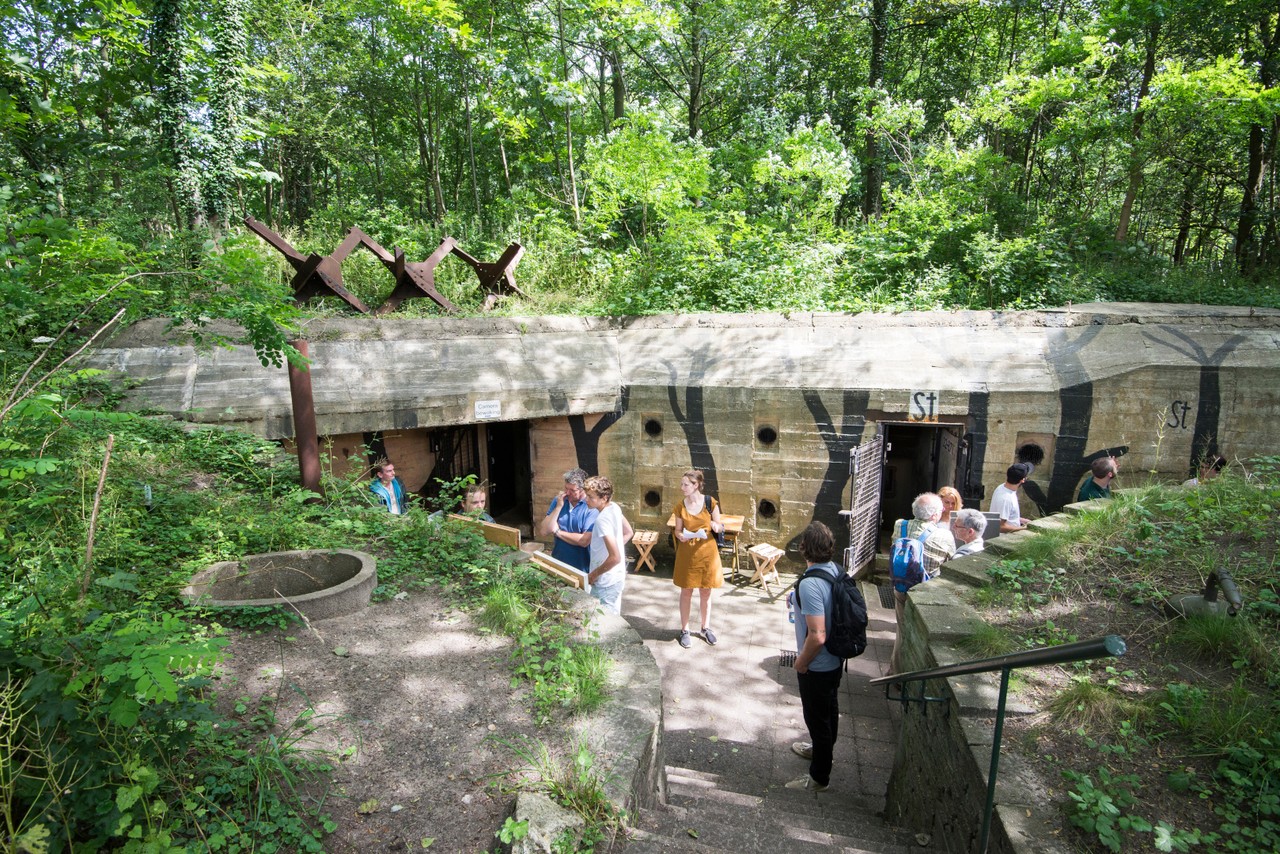There was also a large ammunition bunker with three-meter-thick reinforced concrete walls, camouflaged with painted windows and doors to make it resemble a house. This bunker served as the central ammunition depot for the defense of Widerstandsnest 318, the code name for this headquarters in the Atlantic Wall. In case of enemy threat or an actual Allied landing on the coast, Commander Tzschoppe and his key officers would leave the villas and continue their operations across the road from a bombproof command bunker of type 608 (Bataillons-, Abteilungs- oder Regiments-Gefechtsstand, eingeschossig).
This bunker was also built with three-meter-thick reinforced concrete walls and contained rooms for a telephone exchange, transmission and radio equipment, and a Planraum (operations room) where the coordination of the defense of the Stützpunktgruppe Scheveningen took place. On both sides of the command bunker were bombproof troop quarters for forty men. Additionally, there was a bombproof kitchen bunker, a well bunker where fresh groundwater was pumped and stored, and under the cover of the trees, several lighter bunkers including a toilet bunker.
Opposite the bunkered headquarters stands Villa Windekind. In early 1942, it was requisitioned by the occupiers, who installed a branch of the feared Sicherheitsdienst there. It became a central location for tracking and interrogating hidden Jews and their helpers. During the interrogations, uncooperative suspects were brutally tortured in the basement of Windekind.
The notorious Franz Fischer, one of the “Three of Breda,” had almost complete freedom in his work for the Sicherheitsdienst in the pursuit and deportation of The Hague’s Jewish population. His specialty was the “U-boot Spiel,” in which prisoners were repeatedly submerged in a bathtub to extract confessions or information. His fanatical hunt for Jews earned him the nickname “Juden Fischer” (Jew Fisherman). In the adjacent double villa was a card index with the names and addresses of all Jews in the Netherlands.
Today, the command bunker is a museum. Volunteers of the Atlantikwall Museum Scheveningen Foundation have created an authentic interior and an experience space in one of the troop bunkers. There are exhibition rooms with objects related to the Atlantic Wall in The Hague, as well as equipment from both German and Allied forces.
